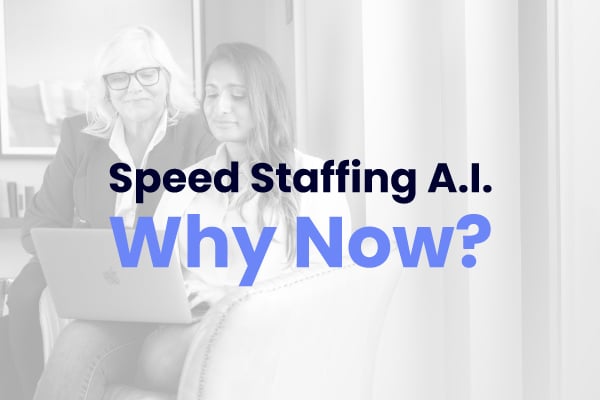Many companies are weighing bringing their workforce back to the office
As organizations look towards the second half of 2021 into 2022 and begin to reimagine what a post-pandemic workplace will look like, many are considering building on the success they’ve seen from remote workers by allowing a continued work-from-home or hybrid work model.
💡 In a recent FlexJobs survey, 65% of respondents reported the desire to be full-time remote employees post-pandemic, and 31% want a hybrid remote work environment. That’s a whopping 96% of respondents who want some form of remote work. This means if organizations want to compete for top talent in the future, offering this type of flexibility is a must.
It didn’t take a pandemic for working moms to favor remote work
This sort of flexibility is something working parents—specifically working moms—have been asking for from their employers for years as they juggle school drop-offs and pickups, after-school activities, doctor’s appointments, sick days, school conferences—all while attempting to maintain an archaic 9-5 in-office work day created before broadband and technological advances. This has put working moms at a disadvantage for decades, manifesting in unhappy workers, feeling of guilt, burnout and a strain on their mental and physical health.
The pandemic, coupled with digital transformations and collaboration technologies like Zoom, Skype and Microsoft Teams showed employers that workers can stay connected to their work. In fact, research study after research study shows that working mothers are more productive, effective leaders, and contribute to better business outcomes. Similar studies show that that flexibility actually “fosters a better employee experience,” and that remote employees work an additional 1.4 more days per month than in-office employees (nearly 17 additional workdays a year).
This kind of flexibility, along with a company respecting its importance at an organizational level, is absolutely critical. This has been reinforced during the pandemic where women we have surveyed have stated that staying remote, at least 2-3 days per week, is essential. According to the American Psychological Association, remote work can increase employee satisfaction when implemented correctly.
This past year, many women were able to work from home but under unsustainable conditions. From attempting to manage virtual learning to shouldering the increased responsibilities of caring for kids to childcare gaps and disappearing support networks, more than 2.3 million women have left the labor market entirely since the beginning of the pandemic in the United States, according to the National Women’s Law Center.
Companies that don’t continue to offer remote work will miss out on top talent
As vaccinations increase, and schools and childcare reopen, remote work becomes more tenable for its workers, as long as employers set them up for success. What this looks like varies depending on a person’s individual needs but it’s safe to say flexibility in how and when we work would alleviate some of the struggles people face balancing work and home.
If companies choose to go back to business as usual post-pandemic, the already devastating impacts on women in the workforce this past year will only compound themselves as working moms attempt to remold themselves into a schedule that doesn’t work for them or their families.
But it’s not just working parents. According to a study done by Global Workplace Analytics, 37% of remote employees would take a 10% pay cut to continue working from home. Many said they would refuse to accept an onsite position because so many companies are offering remote work.
👉 "Flexibility over where they work will be viewed much like the way a 401k is viewed – as a basic component of the employment deal,” Brian Kropp, chief of HR research at Gartner told USA Today. “Those who don’t offer it will have a harder time hiring and retaining employees.”
Why is remote work important in attracting working moms?
Studies indicate women on teams account for greater psychological safety, team confidence, group experimentation, and team efficiency. Women scored at a statistically significantly higher level than men on the vast majority of leadership competencies and have been shown to lead more efficiently during crises. If organizations want to capitalize on this and continue to reach their diversity goals most have set as a priority, keeping and supporting women in the workplace is crucial for their success.
Having a choice of where a person works has become a significant factor for job seekers when looking for a better work-life balance and evaluating new career opportunities, putting companies who offer this at the top of the list.
Setting remote workers up for success
It’s not just incumbent for companies to offer remote work to their workforce, but they must continue to support and set them up for future success. Successful organizations have a pulse on what benefits their workforce is looking for and are making adjustments in real-time to offer them.
Gym memberships and company-sponsored happy hours and team events are being replaced with things remote workers actually need. This means benefits like complimentary cleaning services, meal kits or even credits for virtual tutors or childcare. It can also include stipends to set up home offices that aren’t their dining room tables or virtual leadership training so they can continue a forward-trajectory career path.
💡If you value your workforce, these investments will signal that you are listening and want to put policies in place that allow them to excel at their jobs while still managing a workable work/life balance that so many have struggled for years to create.
Women and the pandemic
Working moms dropping out of the workforce has had a devastating effect on the economy, families, business and the future of working women. A report by AmericanProgress.org estimates that the “risk of mothers leaving the labor force and reducing work hours in order to assume care-taking responsibilities amounts to $64.5 billion per year in lost wages and economic activity.”
👉 "The lack of a child care infrastructure or family-forward workplace policies—policies that support caregivers to both provide and care for their family members—means the challenges of this moment are leading the United States toward a catastrophe.” This not only hurts communities—especially underrepresented minorities—and stifles economic recovery, it will have devastating effects on future earnings potential, retirement savings, and gender equity in the workplace.
It is incumbent on companies to be a part of the solution by offering the flexibility their workforce needs. This comes in many forms, but remote work and flexibility around work hours can go a long way towards reversing some of the damage the pandemic caused.
As a part of our commitment to this topic, this is the fifth in the series “Diverse Talent Cloud -- the Future of Work,” intended to help shed light on their importance, ways to integrate them into your existing talent strategies, implementation best practices, and how to best support these initiatives organizationally. We look forward to sharing more with you soon. In the meantime, be sure to sign up for more information and to learn how we can help you unlock the power of moms.



